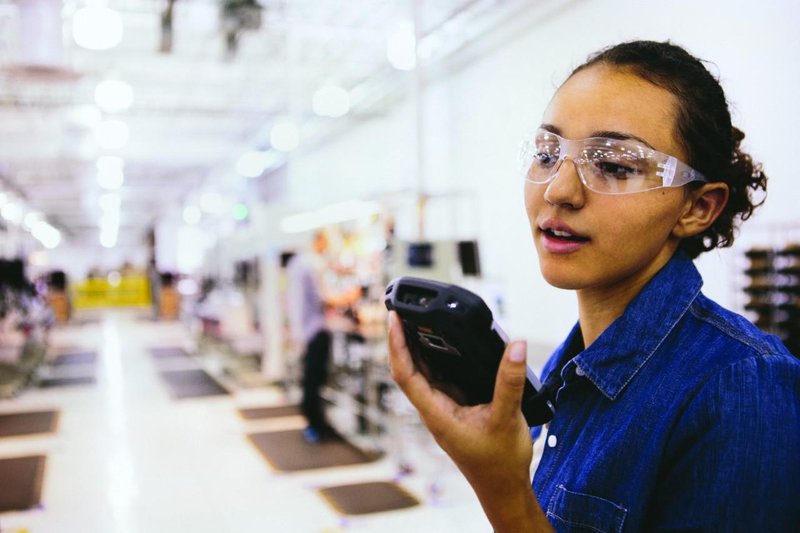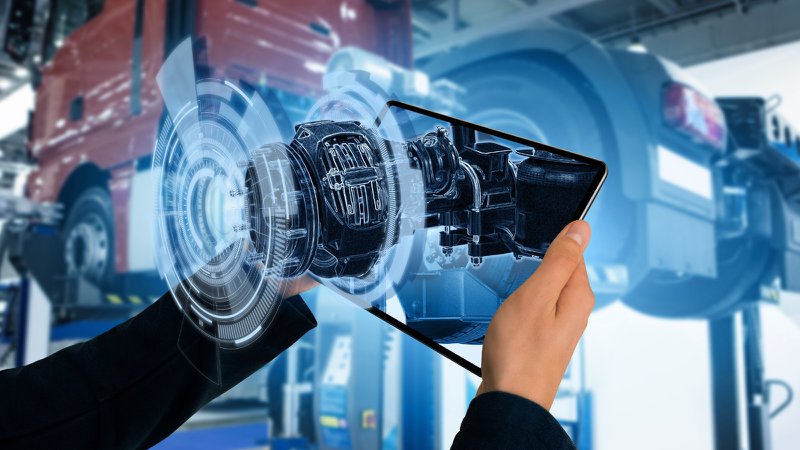In the years ahead, rugged mobile computers will play a key role in helping to solve several perennial business challenges.
Solutions range from stemming the tide of counterfeit and pirated goods (projected to cost 5.4 million jobs by 2022) to significantly reducing the amount of food spoiled in the supply chain.
We look at five of the most notable developments on the horizon and reveal the benefits they are likely to bring to businesses, and their employees and customers.
1) Barcode scanners will help to secure supply chain integrity
From goods incorrectly labelled organic to unethically sourced blood diamonds, unscrupulous (and sometimes oblivious) traders are flooding the market with produce that is not quite what it seems.
In the months and years ahead, issues of supply chain authenticity and provenance will be tackled with rugged mobile computers’ barcode scanners. With a little help from blockchain technology, sensors, and IOT (Internet of Things)…
Here’s how it works.
Currently, barcodes and/or radio-frequency identification (RFID) are used in more sophisticated supply chains to track items. However, they rely on centralised certificate authorities and databases. These are insecure, because they have a single point of failure, making them open to insider fraud or cyber attacks.
Decentralised blockchain systems track a product back to its origin, and through every step of the supply chain. At each point, an RFID or NFC chip is scanned and a smart contract generated. Information is checked by multiple ‘trust nodes’ in the supply chain and written to the blockchain ledger. It is also cryptographically signed and encrypted, to make fraud and hacking almost impossible. This secure, transparent process makes it quickly possible to validate a product’s authenticity.
Traceability can be taken even further with the detailed information now available on a product’s provenance and history of movement through a supply chain. Location history is available via GPS coordinates, custody history from IDs, and environmental conditions during storage from temperature and accelerator data (the latter for damage assessment). This information is usually provided by IoT devices – a network of smart devices that collect and exchange data through an existing network infrastructure – and is stored, securely, on the blockchain.
Watch this space: your business’s rugged scanners are likely to play an important part in a revolution guaranteeing product provenance and authenticity.
2) Press to talk (PTT) rugged devices will make communicating quicker and easier
Press to talk (PTT) is a two-way radio technology that traditionally uses a land mobile radio (LMR) network. It’s often deployed by the emergency services and logistics organisations to provide the quick, one-push access to a colleague so often necessary in fast-moving operations.
PTT has been around in one form or another since the 1930s – and it shows. Compare the functionality of a conventional PTT device (basically a walkie-talkie) to a rugged mobile computer with its access to voice calls, emails, maps, cameras etc and it does seem like a somewhat antiquated, one-trick pony. However, PTT has retained its hold on the market because smartphones simply can’t compete with the one-push mechanism: launching a dialer app and then punching in a number is time-consuming by comparison. It also allows ‘one to many’ (group) communications, which a standard call doesn’t.

This is why the launch of PTT rugged devices is a game-changer. This cost-effective tech offers PTT functionality over mobile networks, which have improved massively in terms of reach and reliability. Devices include programmable PTT buttons for instant voice communication even when the user is wearing gloves. Crucially, they also include the features of standard rugged phones, so users can send and receive data and enjoy all the functionality they offer.
Businesses can choose to invest in PTT mobile devices; or they can integrate apps such as Zebra’s PTT Express with compatible models, which is a cost-effective way of introducing the technology to a business.
3) Augmented reality will increase the ‘first-time fix’ rate for field workers
First-time fix rate – the proportion of issues solved on the first visit by an engineer – can have a huge effect on customer satisfaction, profitability and worker productivity. The good news for businesses is that augmented reality, in which computer-generated information is overlaid onto real-world environments, is likely to boost that fix rate considerably.
Here’s a scenario to illustrate its potential. A technician visits a customer to undertake a complex repair. Using a rugged mobile computer with an AR headset, they activate a service manual. This overlays 3D animations onto real-life components, providing instructions on assembly, disassembly or repair. These graphical displays over the real physical environment are clearer and easier to follow than a print or digital manual. In other words, it becomes easier to deliver that first-time fix.
AR technology can also be used to remotely assist customers and train technicians. It could even give accurate information about parts – such as serial numbers, the model, performance, expiry dates – by simply looking at them.

A caveat. While many newer devices will already have AR software integrated into the OS, building AR solutions is currently expensive. This means rollout is limited to date. However, interest is building and we can expect to see AR become more widespread in the years ahead.
4) The Internet of Things will cut logistics supply waste
It is estimated that a staggering one third to one half of all food produced is wasted. However, recent advances in technology are likely to play a significant role in reducing this.
The Internet of Things is key here. To elaborate on our definition of IoT in point 1, these devices collect and exchange information through an existing network infrastructure, with each device being uniquely identifiable.
For food, IoT can play a part at the very beginning of the supply chain in the field. Smart sensors can help to monitor and protect crops, providing information that lead to better decisions around maximising yield. Next, in processing and distribution, smart sensors can monitor temperature every 30 seconds (for instance in warehouses or lorries) and even detect freshness using sensors that monitor for the presence of ethylene gas, which indicates spoilage. Product can then be redirected to the closest available location if necessary. The same temperature and spoilage tech can be used in-store to generate accurate ‘consume by’ dates.
Which leads us to rugged technology. Apps for rugged mobile computers offer immediate access to the sensor data, so product can be monitored and tracked. For instance, a user can receive alerts in case of a temperature problem. They can also receive detailed information for analysis, to ensure they are complying with food regulations.
Of course, we are just using food here as an example. Others perishables such as flowers and pharmaceuticals could benefit massively from this game-changing tech.
Expect more data, more analytics to track your goods, and more successfully shipped products.
5) Rugged devices will help businesses boost their sustainability credentials
Many companies put their sustainable and environmental credentials front and centre. And for good reason. According to one report, 64 per cent of millennials consider a company’s social and environmental commitments when deciding where to work.

We can vouch for this: conversations with Nuffield Technologies’ clients are increasingly steering towards the sustainability of the products and services we offer.
The good news is that rugged mobiles are leading the way in sustainability. While the recent launch of a ‘sustainable’ phone was praised for its forward-thinking, rugged devices have been offering the same kinds of features for many years. Rugged tech is sturdy, well supported for repair and batteries are also replaceable, helping to extend the life of the product (typically 10 years as opposed to two to three years for consumer models). Also, unlike many consumer models, new devices are commonly backwards compatible with chargers, cradles and other accessories, extending the life of peripheral products.
For these reasons, we strongly believe there will be a further shift to rugged mobile computers, and companies who may employ hundreds or even thousands of workers in logistics will rightly shout about these sustainable gains.
Nuffield Technologies offers a full solution – from consultancy to procurement and software development – for businesses looking to boost their performance with rugged technology.
We also keep our customers up to date with all the changes in the rugged tech world. Read our definitive guide to migrating your rugged technology from Windows CE to a new OS – a change all businesses using rugged tech need to address. Download this white paper here.

